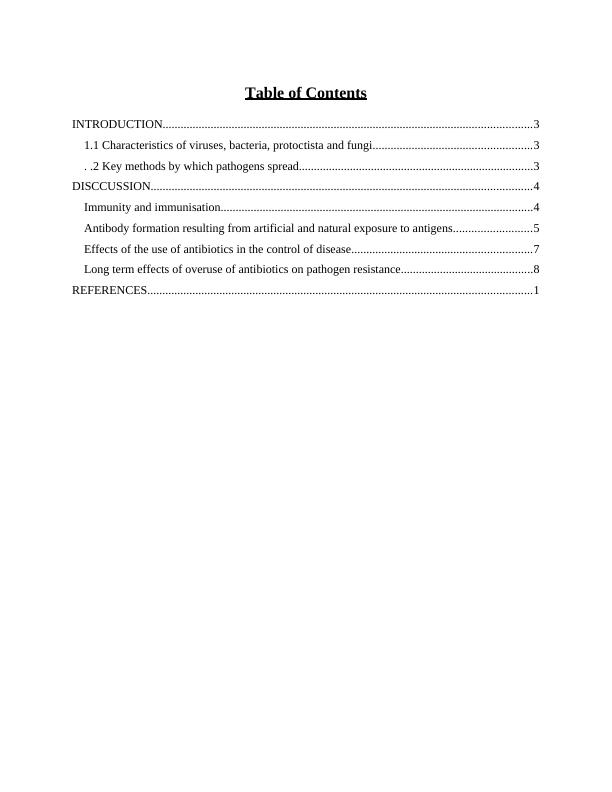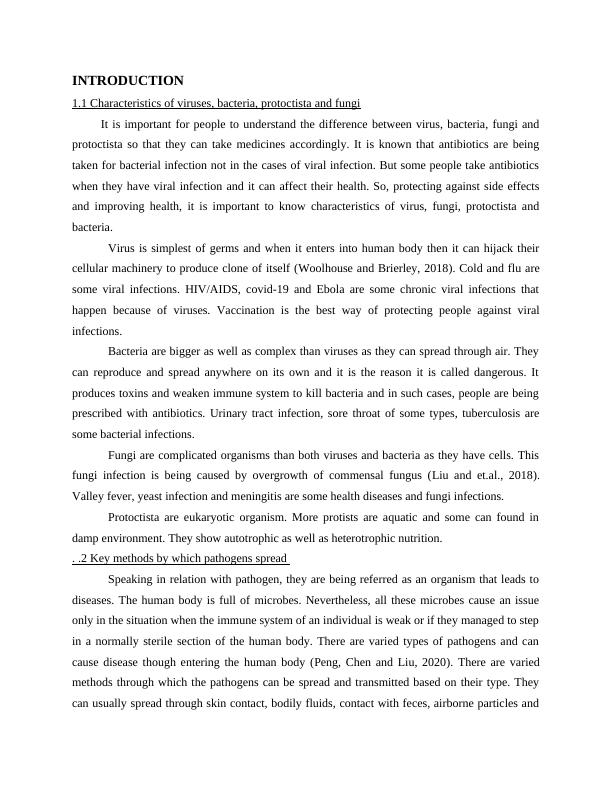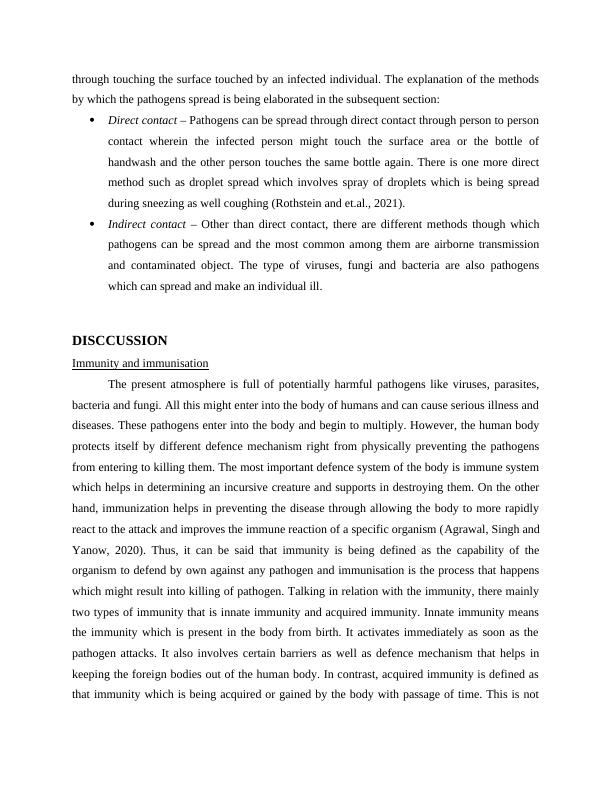Understanding Pathogens and Antibiotics: A Comprehensive Study
11 Pages3914 Words127 Views
Added on 2023-06-09
About This Document
This study provides a comprehensive understanding of pathogens, immunity, immunisation, and the effects of antibiotics in controlling diseases. It covers characteristics of viruses, bacteria, protoctista, and fungi, key methods of pathogen spread, antibody formation, and more.
Understanding Pathogens and Antibiotics: A Comprehensive Study
Added on 2023-06-09
ShareRelated Documents
End of preview
Want to access all the pages? Upload your documents or become a member.
CHEM 480A- Genomics and Infectious Diseases | Assignment
|8
|2020
|130
Microorganisms, Vector-borne Diseases, and Infection Prevention
|11
|4269
|432
Infection Prevention: Types of Microbiological Organisms, Vector-Borne Diseases, Defense Mechanisms, and Micro-Organism Control
|17
|6916
|360
Report on Infectious Diseases- Controlled and Prevented
|8
|1619
|226
Infection Control: Understanding Infectious Diseases, Prevention and Symptoms
|7
|1437
|401
Assignment : Infection Control
|7
|764
|144




